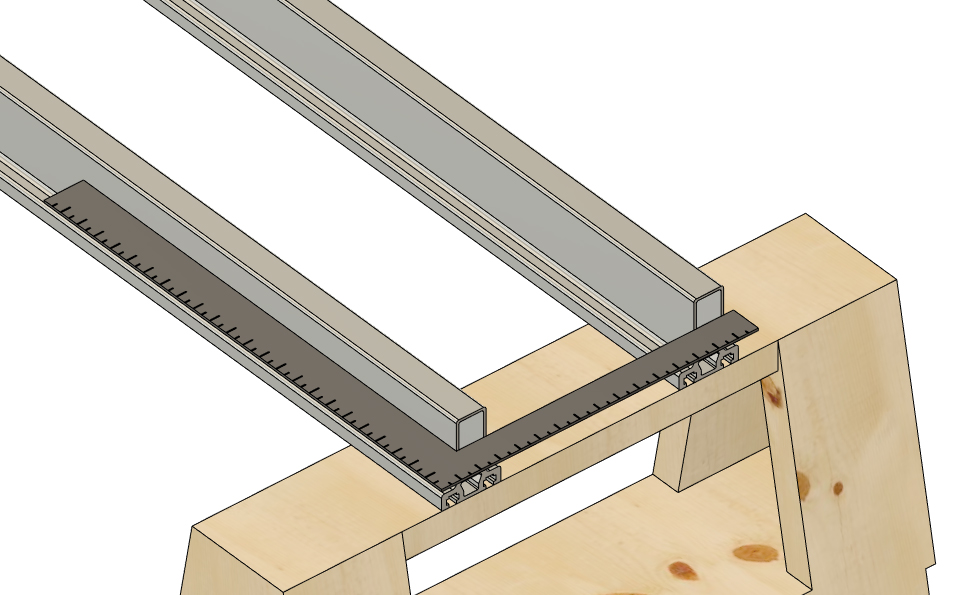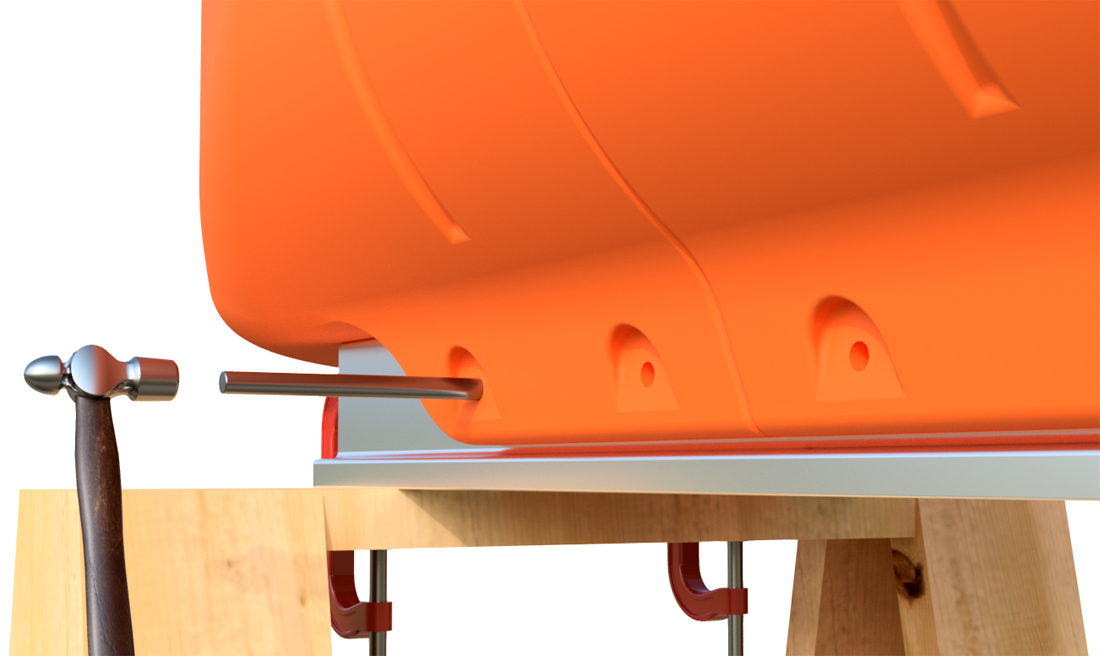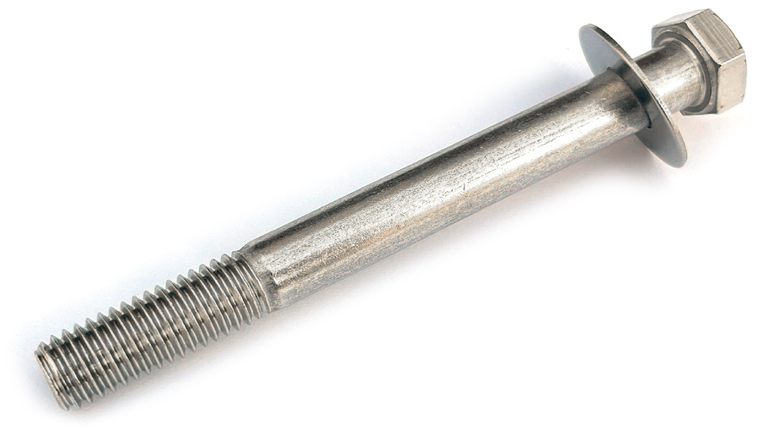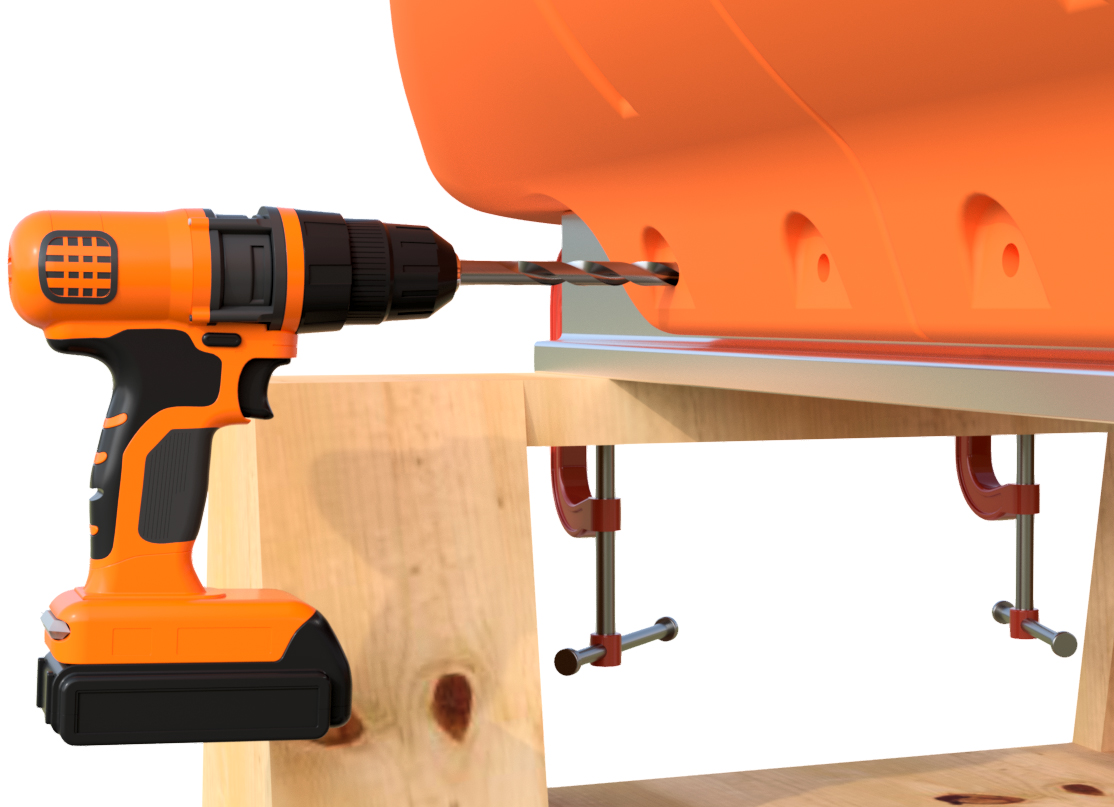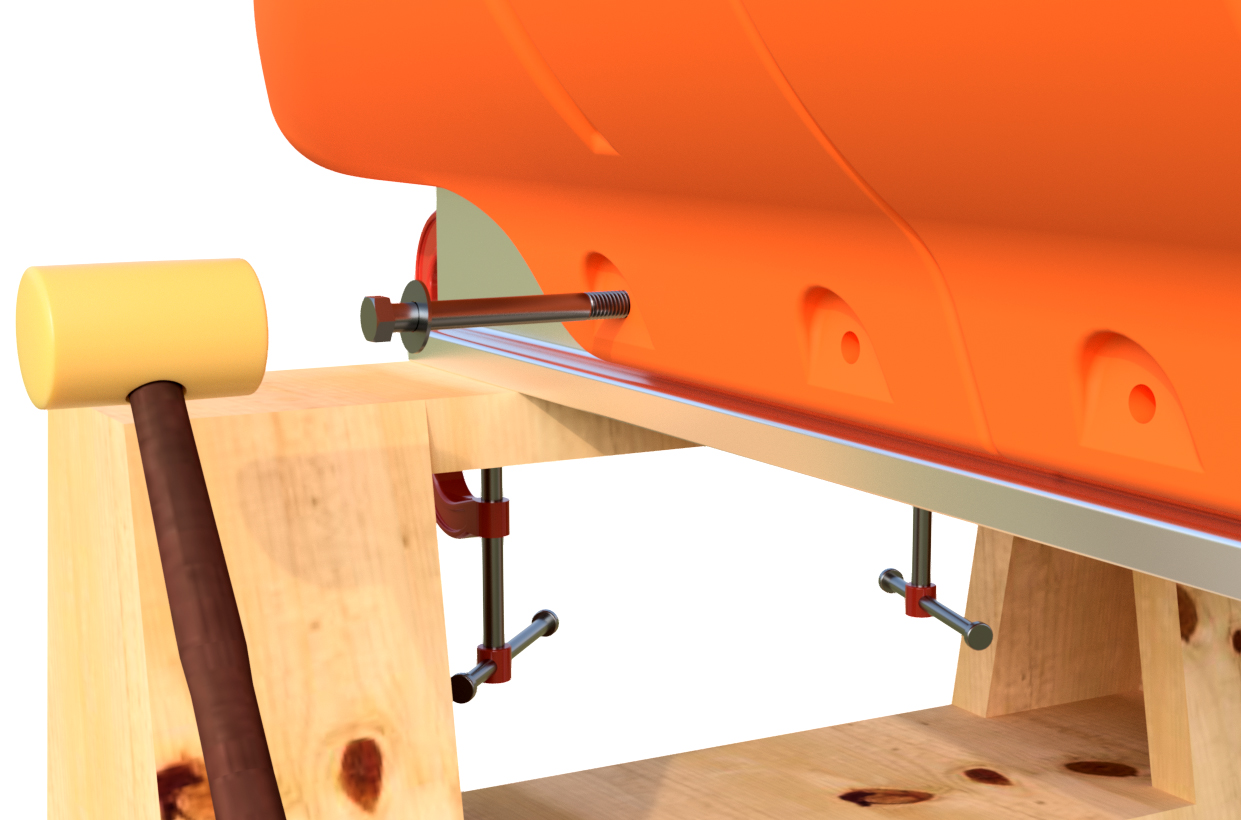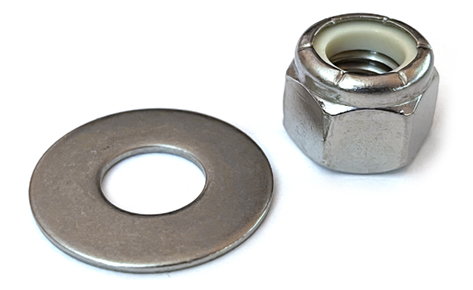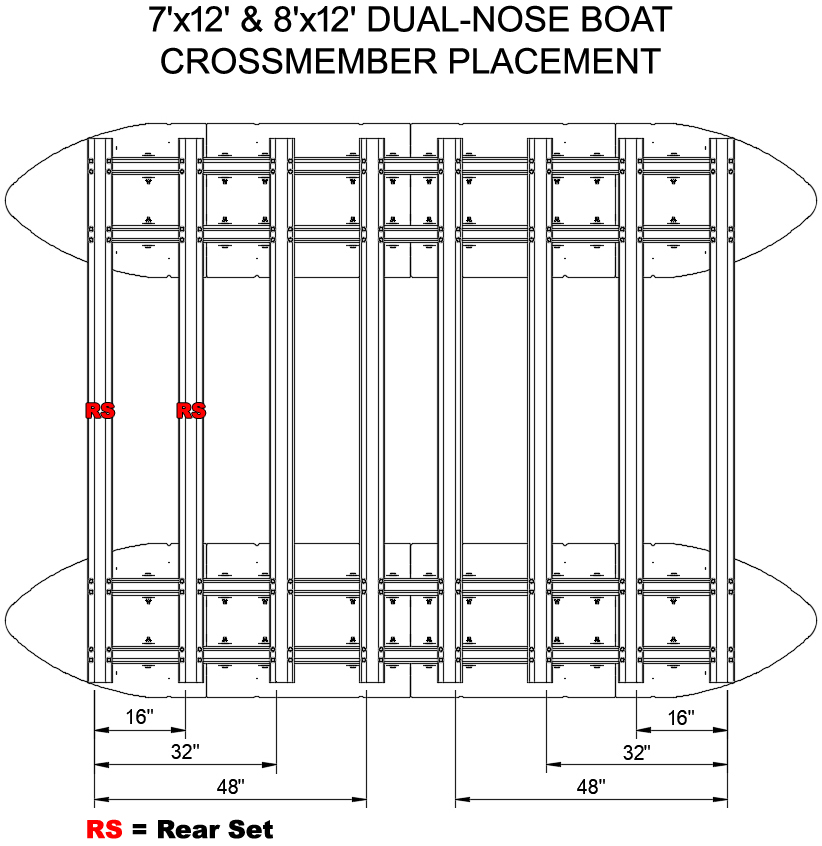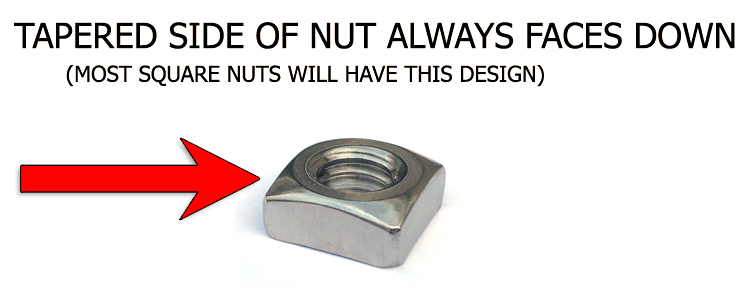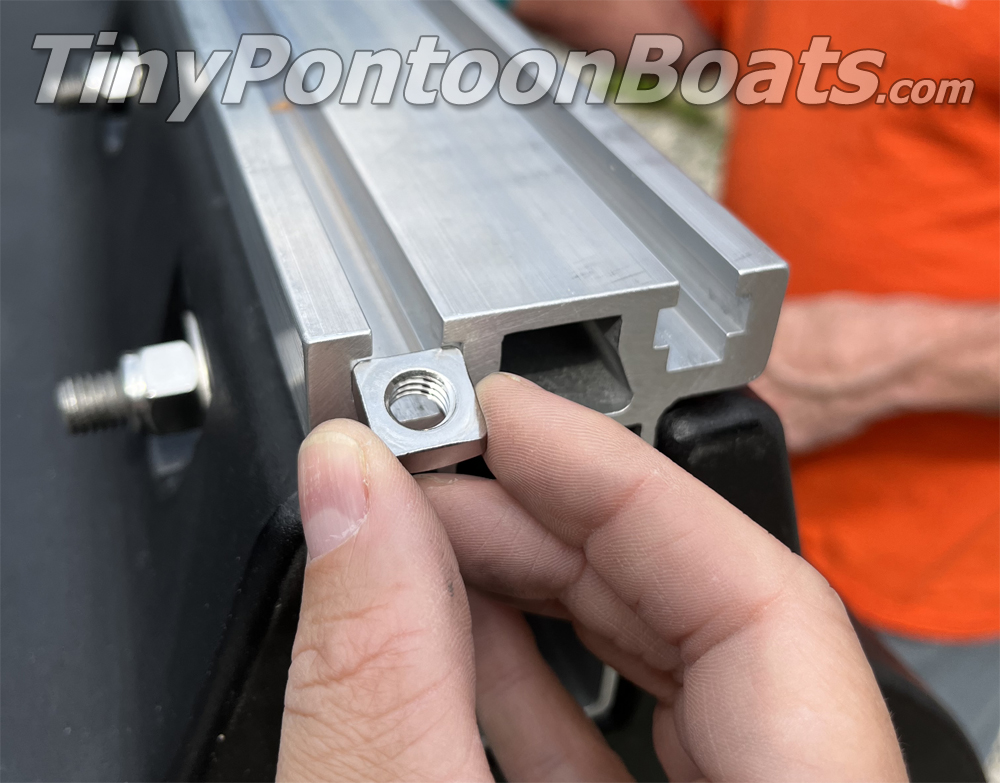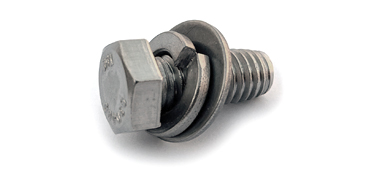

|
REQUIRED TOOLS
The frame and pontoon assembly for our 7'x12' and 8'x12' dual-nose pontoon boats with 27" floats requires a few basic tools, as well as a couple specialized tools. Below we have provided a list of everything that you'll need, as well as part numbers and links to where you can get the specialized tools from McMaster, which is a reasonably priced industrial supplier. Click on the part number to view the item on the McMaster website. Many customers will already have the majority of these tools, if not all of them. These tools (other than perhaps the transfer punch) should be stocked at your local home supply or hardware store as well.
|



|



|
STEP 3
Place a nose cone float on both ends of the pontoon assembly as shown. Due to the shape of the nose cones, you will not be able to place ratchet straps over them.
|

|


|
STEP 5
Remove the ratchet straps. Before removing the floats, number the positions of the floats on the main beams as shown. Number the floats and main beams on both sides of the pontoon assembly. Label position 1, 2, 3, and 4 on one side and 5,6,7, and 8 on the other. This ensures that you don't mix up the positions of the floats after you drill holes. You can use a piece of masking tape to write on or you can use a marker to write on the floats and main beams. If using a marker, lacquer paint thinner will remove the ink after assembly, and the paint thinner will not hurt the plastic or the aluminum. Remove the floats and unclamp the main beams from the saw horses.
|
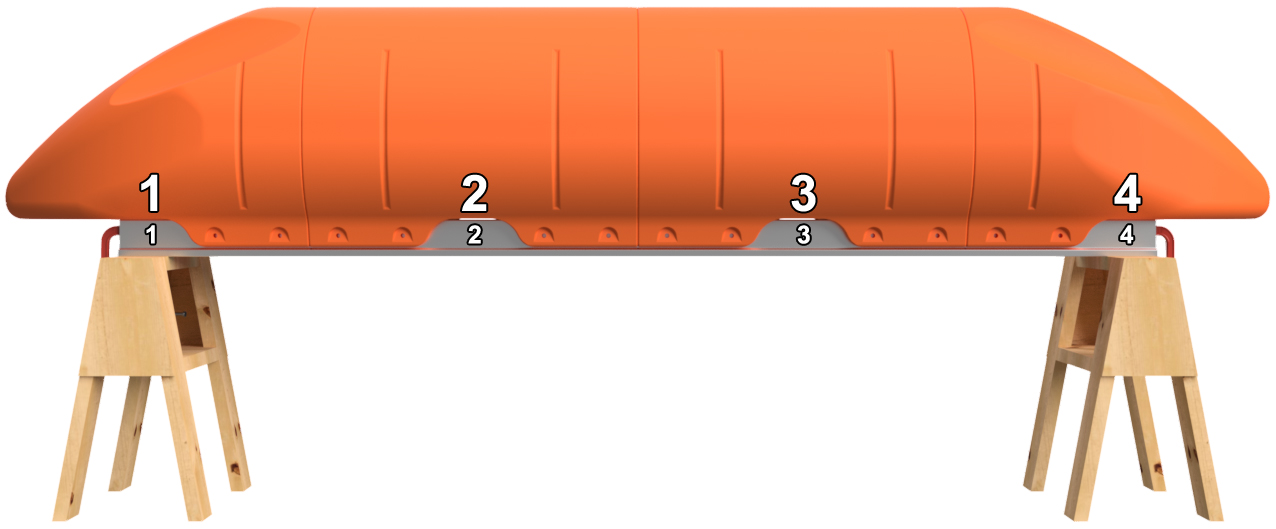

|
STEP 6
Using a standard center punch, make the marks you made with the transfer punch in step 4 more pronounce. This will make the holes easier to drill in the next step.
|

|













|
TRANSOM INSTALLATION
With your frame assembled, the next step is to install the decking or transom. If you purchased our aluminum decking package with your boat kit, the final installation of your transom happens AFTER the decking is installed. Decking installation instructions are listed HERE. If you are using marine grade plywood for decking, you can install the transom before the plywood is installed.
Select the 3/8" x 1 1/4" hex bolts and 3/8" SAE flat washers from the hardware bag labeled "transom mounting hardware" or similar, and insert a bolt with flat washer through each of the inner holes in your rear set crossmembers. Line up the hanging bolts with the holes in the mounting tube of your motor mount and hold the transom in position. You will require a clamp to do this if you don't have a helper. Using a socket with an extension, install a 3/8" flange lock nut on each bolt hanging into your transom tube. The extension allows you to reach into the tube from under the boat. If you purchased two motor mounts, bolt both on the same way. Tighten and then double-check every nut and bolt holding your transom or transoms. Completely tighten all of your rear set crossmember bolts and your assembly is complete! 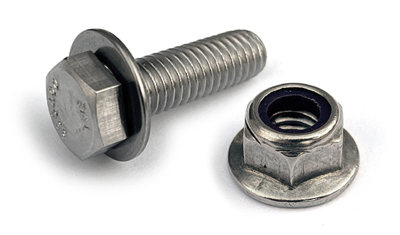 |
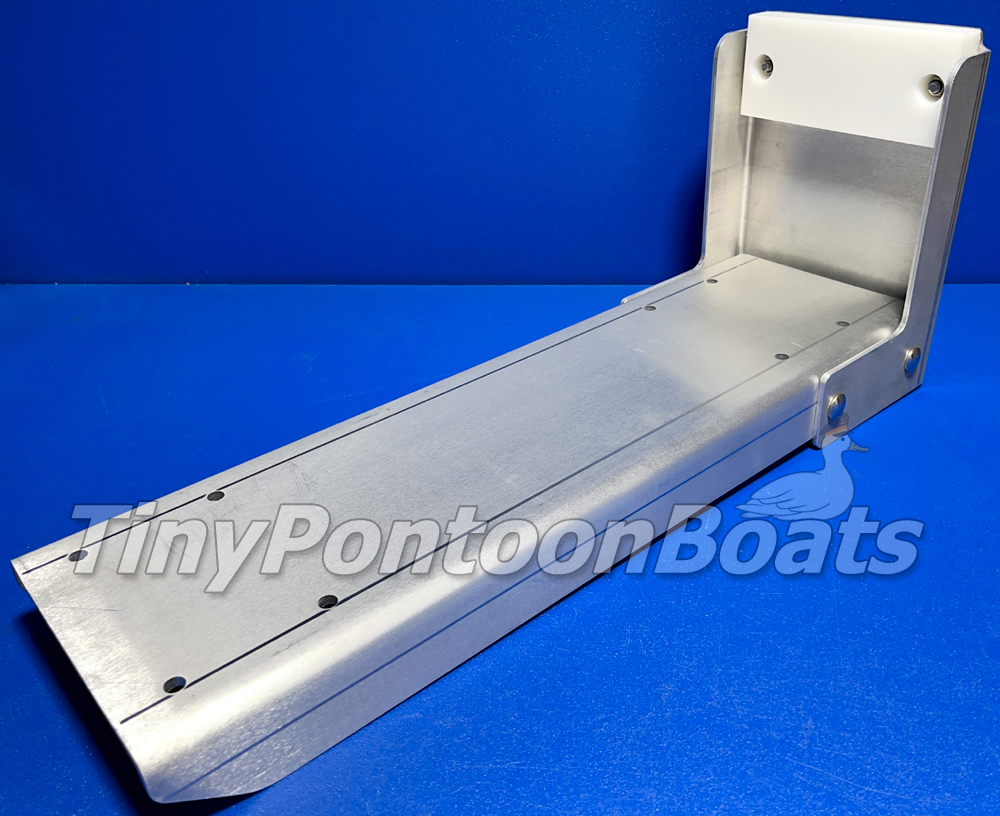

|

|
YOU'RE DONE!
The frame and floats assembly for your dual-nose pontoon platform is now complete!
|




